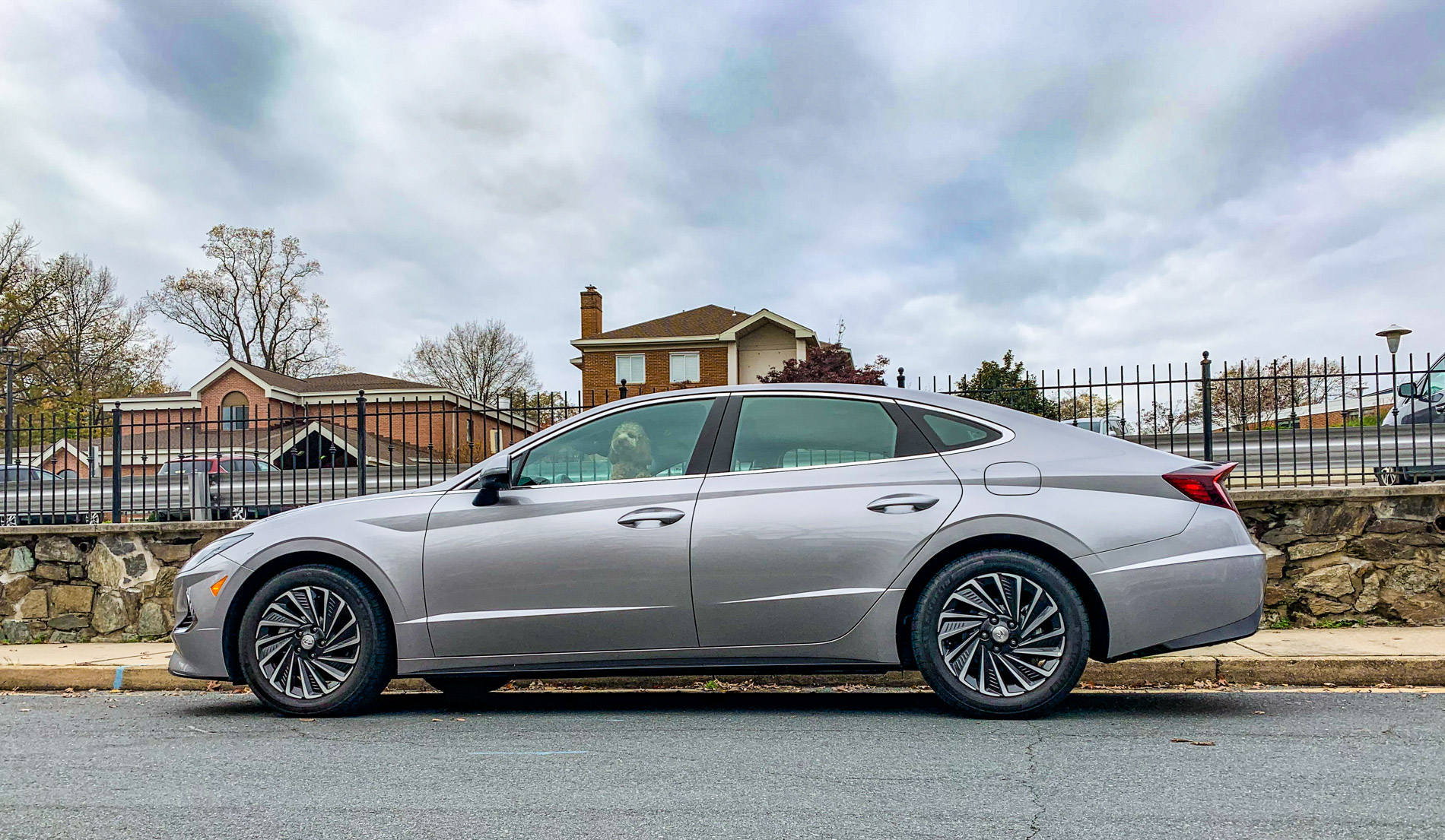Seriously, the title of this article couldn’t be more true. I say this with no specific preference or bias regarding the Korean automaker. It’s just that this ongoing car-review-story that I’ve been telling has a hero emerging, and its name is the Hyundai Motor Company. Between their various badges, Hyundai, Kia, and Genesis, they are simply making good vehicles. The Veloster Turbo is incredibly fun, the Genesis G70 could be a giant killer, the electric Niro and Kona are both impressive compact EVs, and the Palisade and Telluride are some of the best SUVs I’ve driven. That’s not even getting into Hooniversal favorites like the Stinger GT and Veloster N. There may be no other car conglomerate producing a better mix of automobiles. It was with this positive feeling that I hopped into the latest Sonata Hybrid for a week. Let’s see it if lives up to the hype.

Background
The Hyundai Sonata is a Korean classical music car, at least according to comedian John Mulaney. It dates way back to 1985, when Hyundai marketed the first generation Sonata as an executive sedan. As it predates Hyundai’s arrival on our shores, we wouldn’t get our first taste of the car until the second generation in 1988. While it was designed by Giorgetto Giugiaro of ItalDesign, it was a fairly forgettable looking entry into the sedan market. Built on the platform from the Mitsubishi Galant and using its 2.4L engine, the Sonata was only partially a true Hyundai at this point. I won’t go gen-by-gen, so here’s a quick graphic of the Sonata through its lifecycle.

We’re here for the most recent update, the 8th generation which uses what Hyundai calls, and I’m not making this up their new “Sensuous Sportiness” design language. Coincidentally, that is how we refer to Jeff around here. If you look at the Sonata through the years, you’ll see how the Sonata has gotten curvier and curvier. Haven’t we all. Hyundai lists the regular petrol-powered and hybrid Sonatas separately on their website. The base Sonata starts at a reasonable $23,600*, while the base hybrid model rings in at $27,750*. The Sonata Hybrid comes in three trim levels.
(*It’s that time of year again, Hyundai has updated their website to 2021 models but they are still loaning out 2020s, so details may vary slightly).

What’s impressive right off the bat is the pricing. Hyundai and Kia have always touted that “more content; less cash” concept, although probably not that exact slogan. The Sonata Hybrid in base “Blue” form starts at a reasonable $27,750 and nets 52 MPG combined. Our Limited tester started at $35,300 and with just $155 in options lands at $36,430 out the door. Here, check it out, and then it’s off to the review!

Exterior
If you pan left to right on the history of the Sonata graphic above you’ll see just how much it has evolved from a styling perspective. “Mild to wild” is a cliché that I won’t use, I promise. Besides, the new Sonata isn’t really wild, it’s still a midsize sedan and not some limited edition hypersupercar. Still, Hyundai with some bold design elements, particularly up front. Like a lot of automakers, they went with a big ole grill, and at certain angles the Sonata looks a bit like a carp. But like, an upscale carp who could easily have a really good middle management job with great benefits and a 401K.

At night, the Sonata is easy to spot with it’s unique headlight design. The metallic strips that run stem to stern, headlight to c-pillar, are certainly striking and definitely not derivative of any other specific car.

The rear is pretty handsome, as is the profile. I particularly like the way the trunk lid protrudes out further at the top, almost making a spoiler. The fan-style wheels are ok, they definitely give off that “hybrid” vibe. But overall, Hyundai kept from shouting “hey you, I’m a hybrid!” at passers-by.

Interior
Automotive interiors are tricky. The mix of tactile touchpoints requires a variety of materials. Go to expensive and you’ll drive up the MSRP. Go to cheap and buyers will notice. I think Hyundai has struck a good balance between comfort and affordability. Even though they use some of the gloss black material that has invaded so many other automaker’s interiors (and shows every bit of dust and dirt in the car) the overall interior looks good.

Mercifully, they decided not to make the infotainment screen look like a glued-on iPad. Yeah, it sticks up a bit, but the organic shape looks much better than a lot of the German-designed screen layouts.

Elsewhere, there is a good mix of plastic and metal, I particularly like the high-end feel of the HVAC dials. Again, you’ll notice that high-resolution cameras pick up every speck of dust on glossy black trim.

The older I get, the more important seats become to my overall attitude towards a car. Hyundai offers a decent bolster for a hybrid sedan and enough adjustments to keep you comfortable.

Driving
Like the seats, the overall ride quality is a bit deal, especially in a mainstream sedan. The Sonata Hybrid rides incredibly well, between the hybrid silence and the ride quality, it is near silent at times. Even my wife, who typically prefers more traditional luxury brands, was quite impressed with the silence and comfortable ride.

Summary
Bonus Pics










Leave a Reply